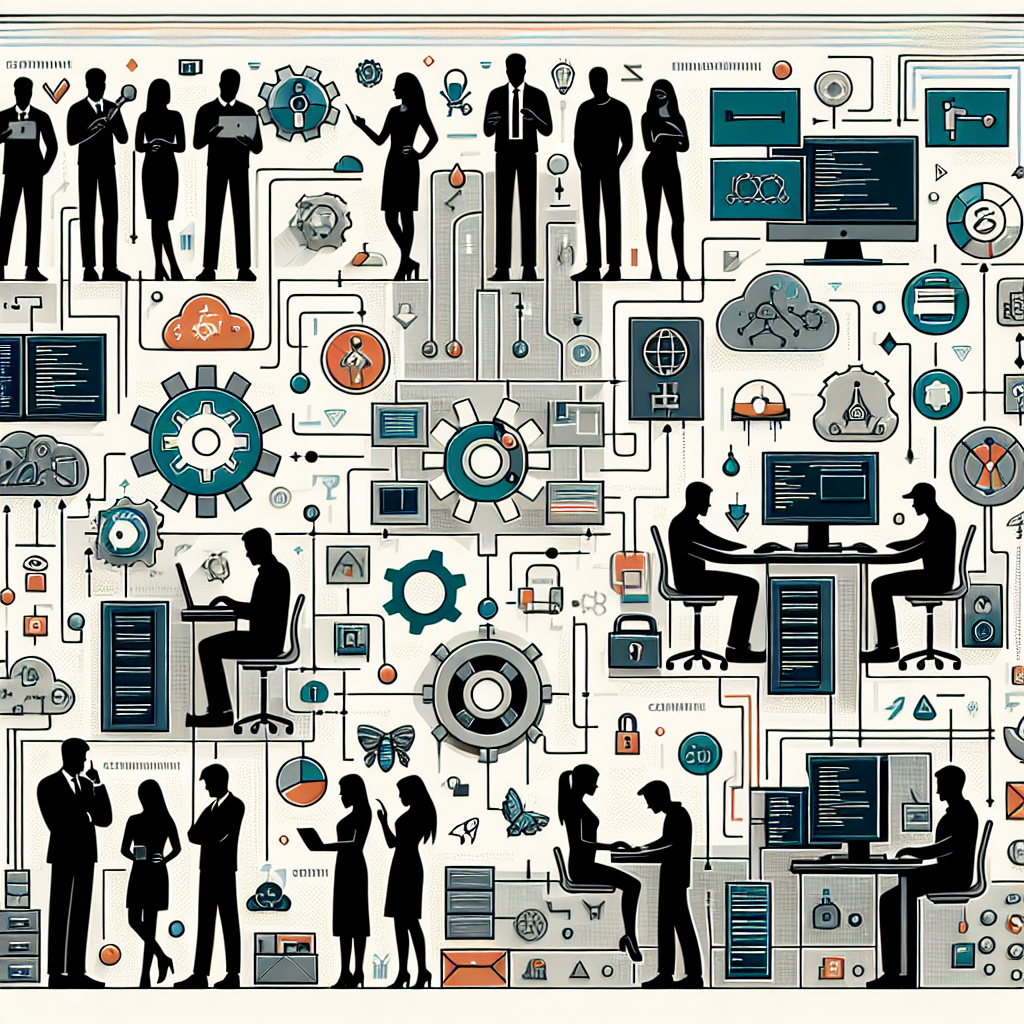DevOps Team Structures: Models, Practical Examples, and Best Practices
In today's fast-paced software delivery landscape, DevOps team structure is a critical factor that determines the success of engineering organizations. For DevOps engineers and SREs, understanding the various team topologies and how they impact collaboration, velocity, and reliability…

Certainly! Below is a technical blog post for DevOps engineers and SREs on **“DevOps Team Structures: Models, Practical Examples, and Best Practices”**. The content is actionable, SEO-friendly, and includes practical examples with relevant HTML formatting. ---
DevOps Team Structures: Models, Practical Examples, and Best Practices
In today's fast-paced software delivery landscape, DevOps team structure is a critical factor that determines the success of engineering organizations. For DevOps engineers and SREs, understanding the various team topologies and how they impact collaboration, velocity, and reliability is essential for maximizing both technical and business outcomes.
Why DevOps Team Structure Matters
DevOps isn't just a set of tools—it’s a philosophy that prioritizes collaboration and clear roles between development and operations teams. The right structure accelerates feedback loops, reduces silos, and empowers teams to own end-to-end delivery, leading to faster releases and more resilient systems[6][7].
Common DevOps Team Models
There is no “one-size-fits-all” DevOps team structure. Organizations should evaluate multiple models and select the one that best fits their size, culture, and technical requirements[4][5]. Below are the most widely adopted DevOps team topologies:
- Collaboration Model: Developers and operations work as a single team, sharing responsibilities for deployment, monitoring, and incident response.
- Embedded DevOps: DevOps engineers and SREs are embedded directly into agile product teams, facilitating automation and reliability from within.
- Dedicated DevOps/SRE Team: A separate team provides DevOps services (CI/CD, monitoring, IaC) to product teams, ensuring best practices are followed.
- Platform Team: Builds and maintains shared infrastructure, CI/CD pipelines, and automation tooling for all engineering teams.
- DevOps-as-a-Service Model: Centralized DevOps experts consult with product teams as needed, often in large enterprises.
Practical Example: Transitioning to an Embedded SRE Model
Consider an organization that previously relied on a centralized operations team. As incidents increased and deployments slowed, the decision was made to embed SREs into product squads. Here’s how the transition unfolded:
- Identify Key Product Teams: SREs were assigned to high-priority squads based on business impact.
- Define Roles & Responsibilities: SREs took ownership of reliability engineering, monitoring, and on-call within the teams.
- Share Knowledge: SREs ran workshops on incident management and observability best practices.
- Automate Repetitive Tasks: SREs introduced Terraform-based infrastructure as code and automated deployment pipelines.
- Measure Impact: Deployment frequency increased by 50%, and MTTR (mean time to recovery) dropped by 30%.
Example: Terraform Module for Infrastructure Automation
Below is a Terraform snippet that an embedded SRE might introduce to standardize AWS EC2 instance provisioning:
module "web_server" {
source = "terraform-aws-modules/ec2-instance/aws"
version = "4.0.0"
name = "web-server"
instance_type = "t3.micro"
ami = "ami-12345678"
tags = {
Environment = "production"
Team = "web"
}
}
DevOps Team Roles & Responsibilities
Successful DevOps teams are built on three pillars: People, Process, and Products[7]. Key roles include:
- DevOps Engineer: Automates CI/CD, configures monitoring, enables infrastructure as code.
- SRE: Designs for reliability, manages incidents, measures SLIs/SLOs.
- Platform Engineer: Builds reusable infrastructure components, manages cloud resources.
- Product Developer: Owns feature development and works closely with DevOps/SREs on deployment and reliability.
Best Practices for DevOps Team Structure
To maximize the effectiveness of your DevOps teams, implement these actionable best practices:
- Foster Collaboration: Use regular cross-team standups and retrospectives to share learnings and align priorities[5][6].
- Define Clear Interfaces: Document APIs, deployment pipelines, and alerting rules so all teams can integrate smoothly.
- Automate Everything: Adopt infrastructure as code, automated testing, and self-service deployment workflows.
- Invest in Observability: Ensure every service exposes metrics, logs, and traces. Use tools like Grafana, Prometheus, and OpenTelemetry to visualize and alert on key events.
- Continuous Improvement: Regularly review incident postmortems and deployment metrics to find areas for process refinement[3].
Sample Grafana Dashboard for Team Observability
Here’s an example Grafana dashboard configuration for monitoring deployment frequency and error rates:
{
"dashboard": {
"title": "DevOps Team KPIs",
"panels": [
{
"type": "graph",
"title": "Deployments Per Day",
"targets": [{ "expr": "deployments_total[1d]" }]
},
{
"type": "graph",
"title": "Error Rate",
"targets": [{ "expr": "sum(rate(errors_total[5m])) by (service)" }]
}
]
}
}
Choosing the Right Model for Your Organization
Selecting the right DevOps team structure depends on your organization’s size, technical maturity, and existing culture[4][5]. Smaller startups often succeed with the collaboration model, while larger enterprises benefit from dedicated platform teams and embedded SREs. Periodically reassess your structure as teams grow and requirements change.
Action Steps for DevOps Engineers and SREs
- Audit your current team structure and identify bottlenecks in collaboration or automation.
- Pilot embedding SREs or platform engineers into product teams for high-priority projects.
- Standardize automation using tools like Terraform and CI/CD pipelines.
- Build and share Grafana dashboards to improve visibility across teams.
- Encourage regular feedback and iterate on your team structure every quarter.
Conclusion
The right DevOps team structure is a force multiplier for engineering velocity, reliability, and culture. By understanding common models, adopting automation and observability, and continuously refining your approach, DevOps engineers and SREs can drive measurable improvements in software delivery. Evaluate your current structure, experiment with new models, and empower your teams to deliver better, faster, and more resilient systems.




